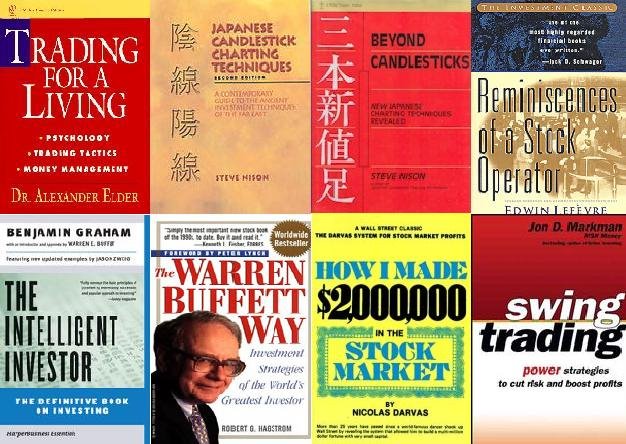
Few days ago, I made a post -
Why bother to trade?I structured the post in such a way, which I think depicts the truths of trading and also provocative. While the total number of comments reached 18 comments, as at the time this post is being made, there is only a handful of people who commented. Which, I appreciate the comments made though, I am disappointed at the number of people who actually commented.
For the benefit of everyone, I would be putting down the definition of investing, trading, speculating and gambling. They are my definition and by no means correct, but they re my definition which I use.

Graham has a definition too. Let's look at Benjamin Graham's definition first.
What do we mean by “investor”? Throughout this book the term will be used in contradistinction to “speculator.” As far back as 1934, in our textbook Security Analysis,1 we attempted a precise formulation of the difference between the two, as follows: “An investment operation is one which, upon thorough analysis promises
safety of principal and an adequate return. Operations not meeting these requirements are speculative.”
And also, the commentary,
What exactly does Graham mean by an “intelligent” investor? Back in the first edition of this book, Graham defines the term—and he makes it clear that this kind of intelligence has nothing to do with IQ or SAT scores. It simply means being patient, disciplined, and eager to learn; you must also be able to harness your emotions and think for yourself. This kind of intelligence, explains Graham, “is a trait more of the character than of the brain.”
I dislike the definition as it does
not distinguish trading from investing. Trading would include
1) A trading system with more than 50% accuracy.
2) Emotional control - much like what is emphasized by Graham as well though a slight change is needed.
3) Discipline to carry out stop loss and to trade as per the trading system.
This would satisfy Graham's criteria for as an investment which "Promises safety of capital and an adequate return"
1. Why safety - Money management techniques would safeguard the trades/trader, limiting the exposure or risk taken. This is normally in two folds - one in the form of stop loss. Another is the size of the trade, hence no overtrading is done.
2. Adequate return - The system which has more than 50% accuracy. And with emotional control to execute the system, adequate return will be guaranteed over the long run. Law of averages promises this.

So let's return to my definition. But as I ve mentioned,
they are my definition and by no means correct, but they re my definition which I use.
Investment - Long term venture with intention to purchase the business or part of the business. Mindset here is as a shareholder of the company. While a shareholder mindset investor may dispose the investment in short period, this should not be an active pursuit. An investor should have the mindset of letting the business grow, otherwise, he wouldn't venture into it in the first place. Having run my own business before, I could tell you from experience, a business needs time to grow, things definitely do not happen instantly. An investor should be able to see the long term prospect of the company and base his decision on that.
Trading - A short term venture whose intention is to capitalise on the short term swings of the market. There is NO intention to be a shareholder. Objective is speed - not being an owner. While a trader may go for long term, it should not be a buy and hold strategy. Otherwise, it would be an investment. Yes, a Turtle Trading strategy would be difficult to differentiate whether it is a trade or an investment.
Speculation - While many have their own definition of speculation, my definition is being an operator. By this I mean to be able to "control" or influence the prices of a certain stock and enticing others to jump in on the wagon would be considered speculation. This is a highly specialized area where enormous amount of cash meets with the highest degree of skills.
 Gambling
Gambling - By gambling, I refer to the 90% of the market population. By jumping into a counter just because it is climbing up or just because it has shed 60% of its value is gambling. Why? Under what basis does one know that the trend will continue or will reverse? Without proper technique, its a gamble as there is no analysis nor any work done to justify the entry.
Majority of people also merely follow a tip. That would be gambling - no analysis done on the individual's part - no basis other than following the recommendation. The gamble is that the recommendation is correct. That is gambling.
Note: Even if I give certain recommendation, do make your own analysis and then derive on your own decision - then it could be either trading or investing. If you do not conduct your own analysis to ascertain the true picture of it, you re merely gambling that my recommendation is correct. I am known to be wrong. Everyone is known to be wrong. I ve yet to met anyone to be 100% correct. Show me one person who is 100% right all the time, and I ll show you a liar.
Then there are those who claimed to be traders but do not have a trading system - then they re not trading, they re effectively gambling. Without a system that works with the Law of Averages, there is NO safety. Hence - gambling.
Therefore, if there is no money management techniques incorporated into the trade entry, its gambling as well - NO money management concept - NO safety - GAMBLING.
~to be continued...Further reading suggested on previous posts:
Gambling; Buy, Pray and Hold; Investing and TradingOf Trader and Gambler



















































